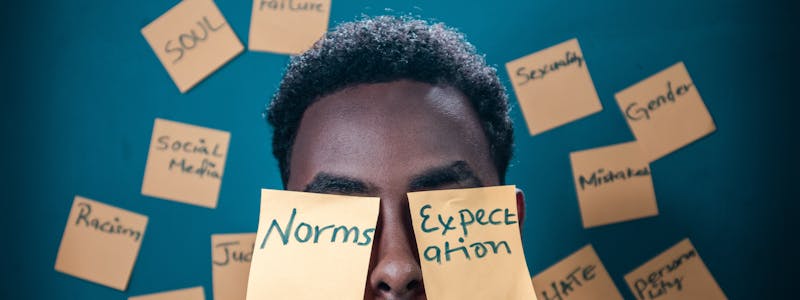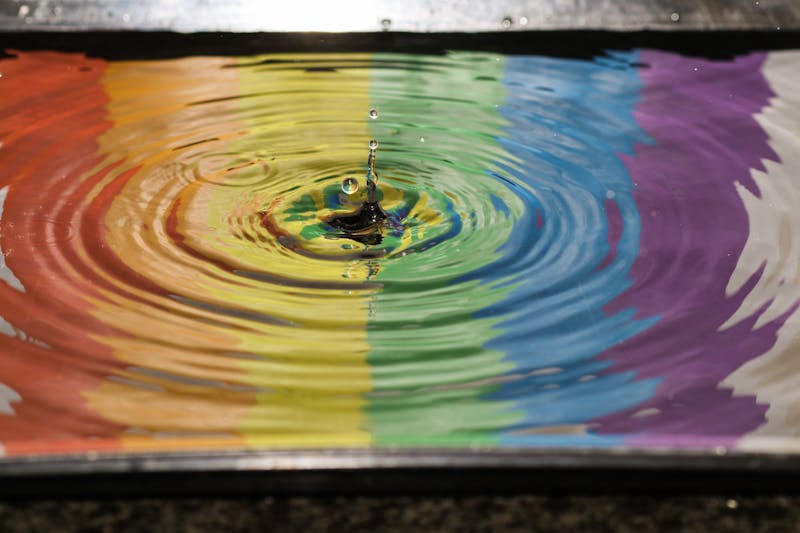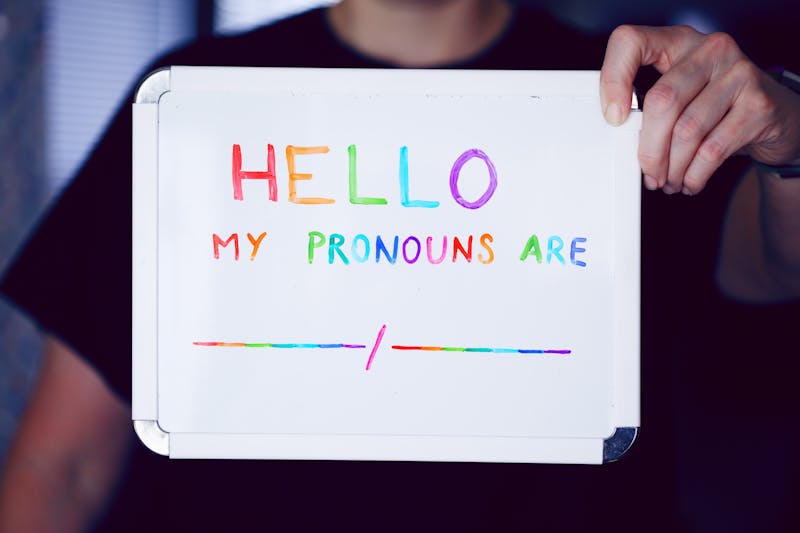An Easy Guide To Gender-Inclusive Language
Author: Sam Walker-Smart
Last update: 3/3/2023

As society evolves and adapts, so does the terminology we utilize both in our personal lives and at work. There have been fast-growing changes in gender-inclusive terms and language, especially in Western culture, such as in gaming, for example, Words With Friends and other instant online games. While far from perfect, the world at large is working towards creating a fairer and more empathetic space for people of all backgrounds, genders, and sexualities.
These changes have come fast, many occurring in the past decade alone. For some, these modifications in accepted language have become confusing to unscramble but can be quickly learned with our easy-to-understand guide below. After all, an inclusive world is a fairer and happier one.
Growth of Gender Identity
When learning about gender inclusivity, understanding its meaning and where the movement came from is a great place to start. The difference between gender and sex is often confused but is broadly understood as sex being a biological term, while gender is sociological. Sex covers the biological and physiological characteristics of males and females, such as reproductive organs, chromosomes, hormones, and the like. Gender refers to the socially acknowledged attributes based on labels of masculinity and femininity, relationships between groups of women and men, and an internal sense of self. What someone identifies with is what gender they are - no matter what they were assigned at birth.
The late 19th and early 20th centuries saw the world take its first steps towards gender equality and the lessening of a purely patriarchal society. While women had won the right to vote in several countries by the end of the 19th century, the British Women's Social and Political Union, formed by Emmeline Pankhurst in 1903, created a long-lasting legacy. The movement they spearheaded, The Suffragettes, resulted in the Representation of the People Act 1918 which gave the vote to women over the age of 30 who met certain property qualifications. Ten years later, women over 21 gained electoral equality with the Representation of the People (Equal Franchise) Act of 1928. This action directly inspired the US's path to The 19th Amendment, which guarantees that women throughout the United States have the right to vote on equal terms with men.
Policy changes followed in more rapid succession. The 60s saw the US introduce the Equal Pay Act in 1963, and in 1967 Lyndon B. Johnson's Executive Order 11375 saw that affirmative action was taken "- to ensure that applicants are employed, and that employees are treated during employment, without regard to their race, color, religion, sex or national origin." Transgender people were also protected from employment discrimination by Title VII of the Civil Rights Act of 1964. The 70s saw further progression with the US introducing the Equal Employment Opportunity Act in 1972 and, for The EU, the European Council Equal Treatment Directive. More recent years have seen policies such as the UK's Gender Recognition Act of 2004 allow people who have gender dysphoria to change their legal gender. There’s still much work to be done globally, but progress is being made.
Basic Terminology
Now, this is by no means a complete glossary of terms related to gender, sexuality, and more. We aim to provide a helpful starting guide for those who want to unscramble and improve their understanding of the common terms we use today. For a more in-depth guide on all things sex and gender, we suggest diving deeper with the LGBTQIA Resource Center's brilliant glossary.
- Androgyne: A person whose gender is both masculine and feminine or in between the two.
- Asexual: Asexuality is distinct from celibacy and is a broad spectrum. Some asexuals have sex and do experience levels of sexual attraction. Others do not experience sexual attraction but can experience other forms of attraction, such as emotional and romantic.
- Bigender: Exhibiting cultural characteristics of both the masculine and the feminine.
- Cisgender: A gender identity, or gender role, that society deems to match the person’s assigned sex at birth.
- Gay: A sexual orientation toward people of the same gender.
- Gender Fluid/Genderfluid: A person whose gender identification shifts in and outside of societal, gender-based expectations.
- Heterosexuality: A sexual orientation where a person feels physically and emotionally attracted to people of a gender other than their own.
- LGBTQIA+: Abbreviation for Lesbian, Gay, Bisexual, Transgender, Queer, Intersex, and Asexual. The plus may represent other sexual identities such as pansexual, gender fluid, queer, bi-curious and many more.
- Non-binary: For people who feel their gender cannot be defined within the margins of gender binary. Their gender goes beyond simply identifying as either a man or woman.
- Polygender: Displaying elements of multiple genders, deliberately renouncing the concept of only two genders.
- Pronouns: Tools used to refer to someone in the third person. Examples are they/them/theirs, ze/hir/hirs, she/her/hers, he/him/his.
- Queer: Queer is an umbrella term for people who are not heterosexual or are not cisgender. The term is often considered hostile when used by those who do not identify as LGBTQIA+.
- Trans: A more inclusive term than transgender for gender non-conforming and non-binary people. ‘Transsexual’ has become outdated.
Gender-Neutral Language
Now that we have covered what LGBTQIA+ stands for, and the progression of gender identity over the years, let's take a look at some gender-neutral language. ‘Gender-neutral language’ is a form of language that avoids bias towards a particular sex or social gender. It is becoming an increasingly popular way to speak, write, and use vocabulary to avoid offense, prejudice, and unscramble gendered language. Here are some examples of how and where to use gender-neutral language.
Avoid Gender-Biased Expressions
Some expressions that we use that fall into this category could be: 'He throws like a girl,' 'That's women's work,' or, 'In a manly way.' Replacing these phrases without using gendered words and simply clarifying what you mean would be preferred.
Use Complete Titles
When referencing someone or specifically a pair of people with titles, such as; doctor, professor, or director, it is best to use their complete credentials when naming them. For example, 'Doctor Jones and Doctor Smith', rather than 'Doctor Smith and his wife,' or 'Doctor Jones and her husband'.
Grouping Words And Gender-Specific Exceptions
When referencing a group of people, it is best to avoid words such as 'guys' or more colloquially 'fellas' or 'lads.' Instead, terms like 'folks,' 'people,' or 'everyone' are deemed less biased. If gender is used to describe a group of people, then using full expressions like 'boys and girls,' 'ladies and gentlemen' should only be used if it is known that everyone identifies with those genders.
Gender-Neutral Pronouns
'He/him' and 'she/her' are not the only options for gendered pronouns anymore, with many people in the LGBTQIA+ community choosing to refer to themselves as 'they/their' or 'they/them.' As a practice, it is becoming increasingly popular to ask for someone's pronouns when meeting them to avoid offense and misgendering.
Gender Neutrality In General Language.
Some phrases that we have used for a long time are becoming less popular, and their gender-neutral counterparts are becoming the new standard for those words. Some you might want to note; 'mankind' becomes 'humankind,' 'manpower' becomes 'staffing' or 'team power,' and 'manmade' becomes 'artificially made' or 'human-caused.'
Courtesy, Caution, And Reclaimed Words
As we talk about the importance of adapting our language to become less prejudiced, there are multiple movements in the LGBTQIA+ community to reclaim and redefine words that had once been used negatively towards specific gendered groups.
The word 'bitch,' which has been understood to mean an 'unpleasant woman’ for quite a long time, is being transformed by women and redefined to mean 'strong/badass woman.' 'Slut' has been redefined similarly, usually referring to an 'over-sexually active woman' to become a 'sexually proud' woman. To some extent, the words 'gay,' 'queer,' and 'tranny' are also being reclaimed as words that celebrate a person's sexual orientation. As said by Paul Baker, writing as part of a language piece for The Guardian, 'Control language and you control the society,' and that is most certainly the attitude of people reclaiming these once offensive terms.
Further Reading & Information
As a closing thought, we ask you to look at the language you use. Although we usually don't mean to offend people with what we say and do, the words that come out of our mouths and write down can sometimes have deeper, subtler meanings that might not sit well with some.
If you are interested in reading more into gender rights, gender-neutral language, and the progression of identity politics, we recommend looking at the following titles.
- Beyond Magenta: Transgender Teens Speak Out by Susan Kuklin
- The Female Brain by Louann Brizendine M.D.
- What's Your Pronoun?: Beyond He & She by Dennis Baron
- Gender and Our Brains by Gina Rippon
- Understanding Gender Dysphoria by Mark A. Yarhouse
While you're here, we encourage you to look at our Word Unscrambler and Words With Friends Cheat tool. The more words you discover, the more gender-neutral your language will be.
Resources:
- UC Davis - LGBTQIA+ Glossary
https://lgbtqia.ucdavis.edu/educated/glossary - Mental Help - Development Of Gender Identity
https://www.mentalhelp.net/adolescent-development/gender-identity/ - How the radical British suffragettes influenced America’s campaign for the women’s vote
https://www.vox.com/21356259/19th-amendment-suffragists-alice-paul-pankhursts - United Nations - Inclusive Language
https://www.un.org/en/gender-inclusive-language/guidelines.shtml - The Guardian - Reclaiming Words
https://www.theguardian.com/media/mind-your-language/2015/oct/30/power-grab-reclaiming-words-can-be-such-a-bitch

